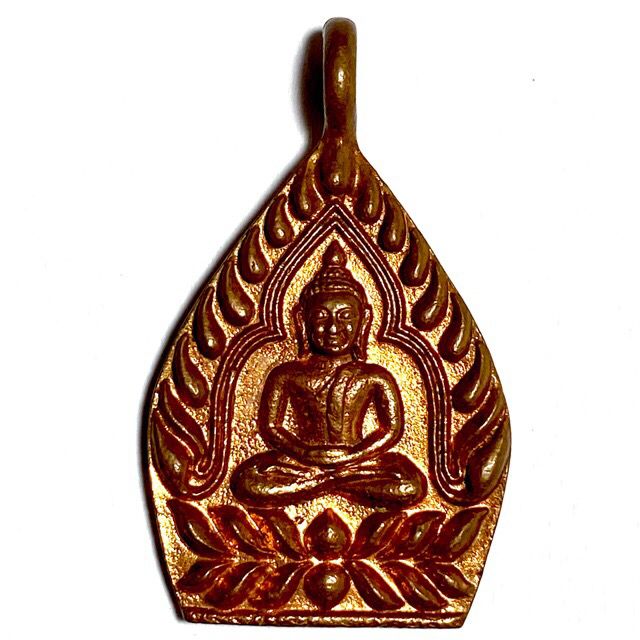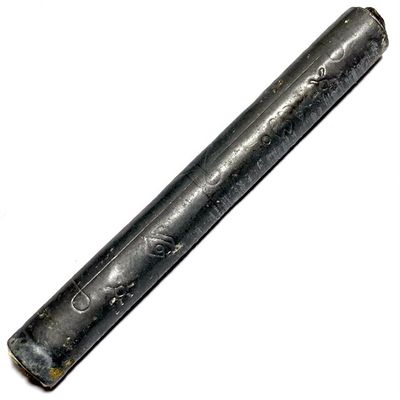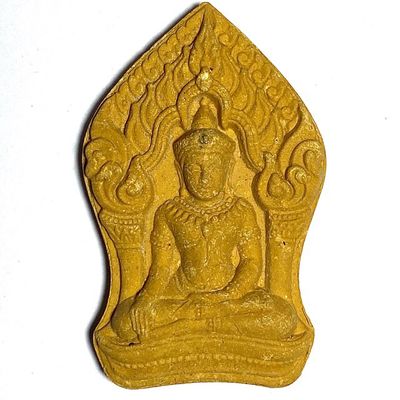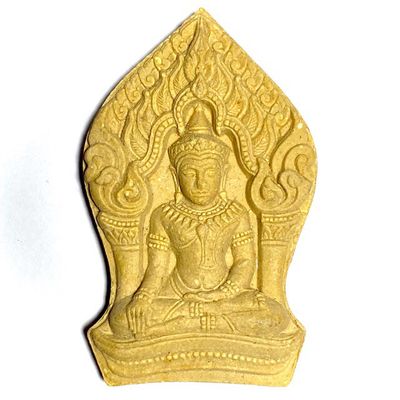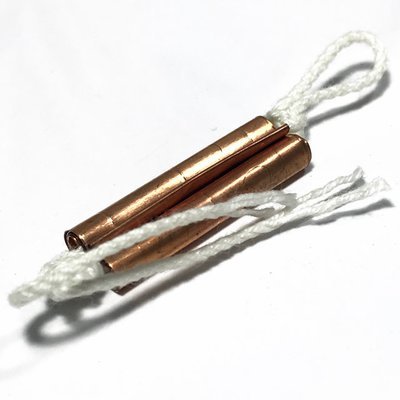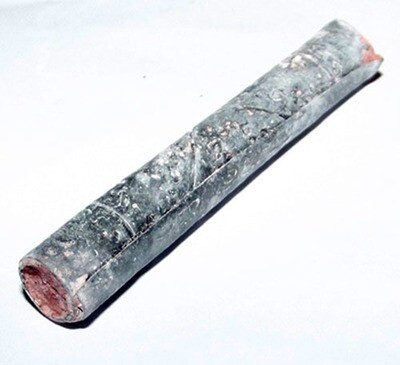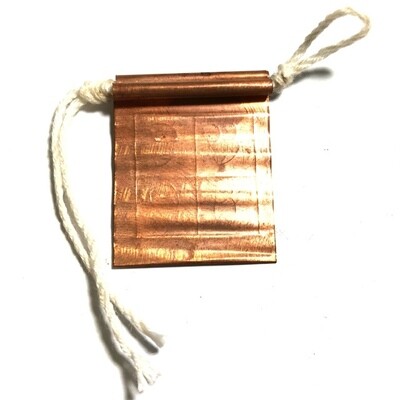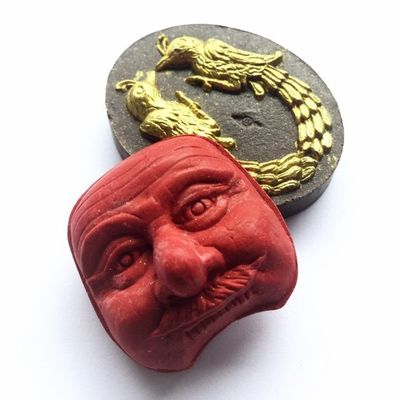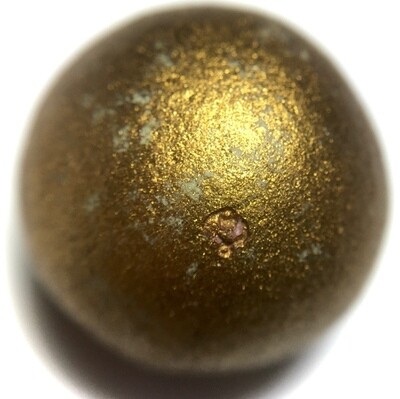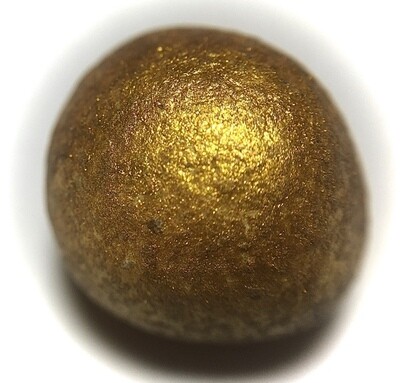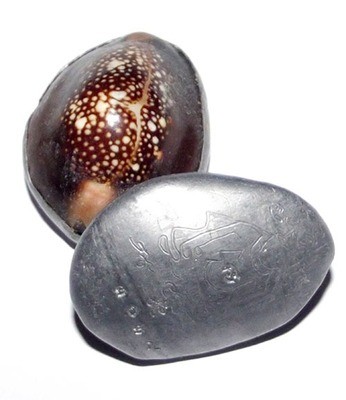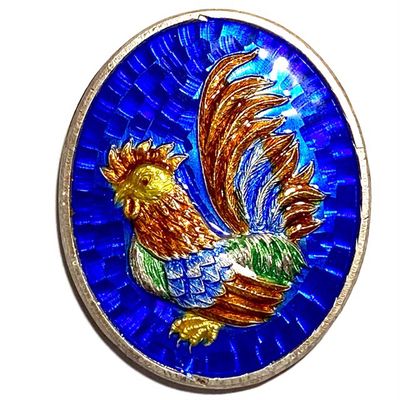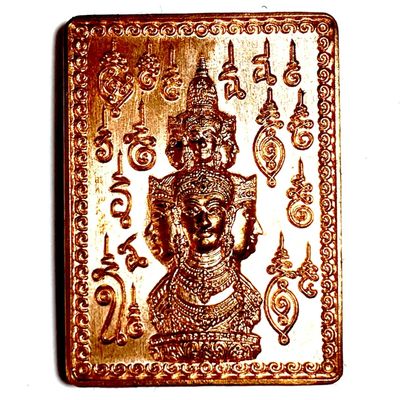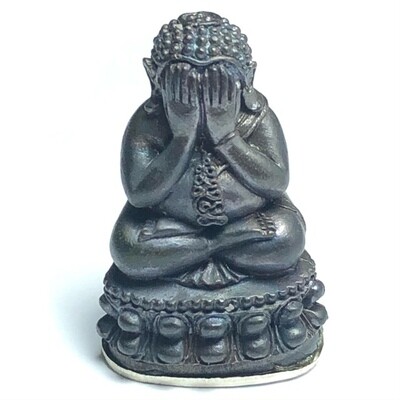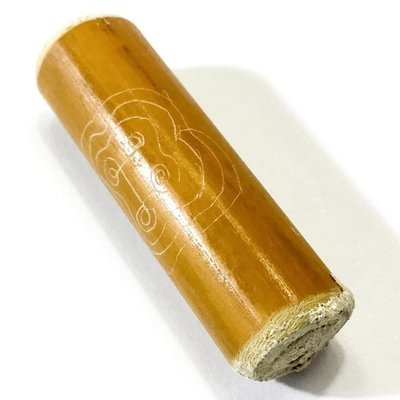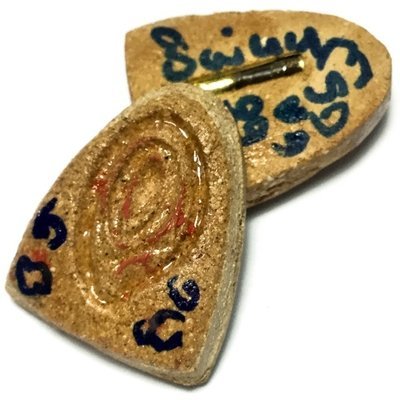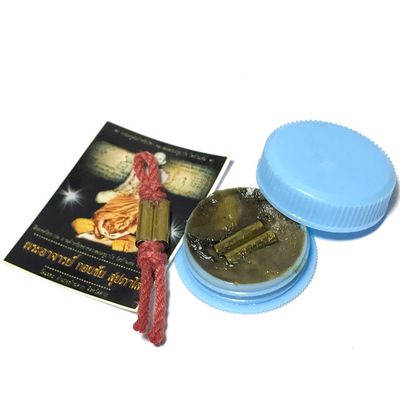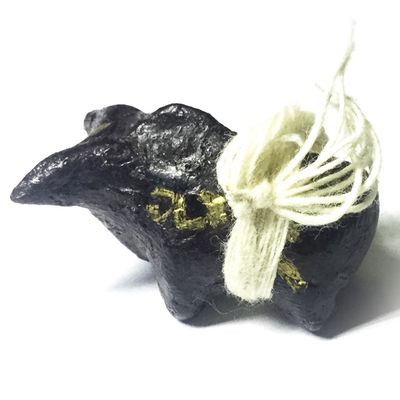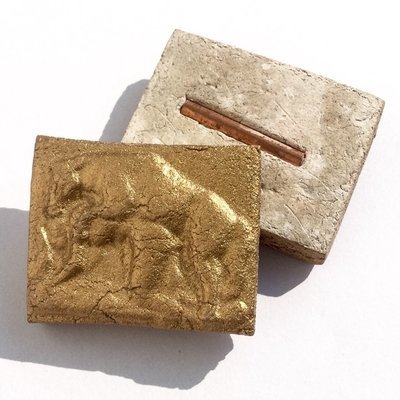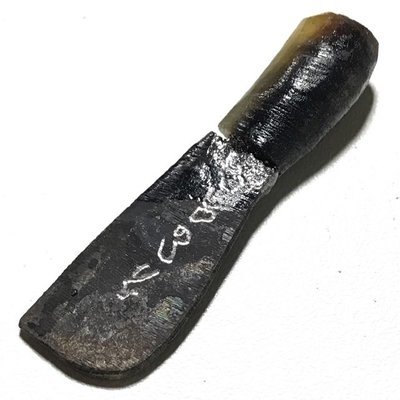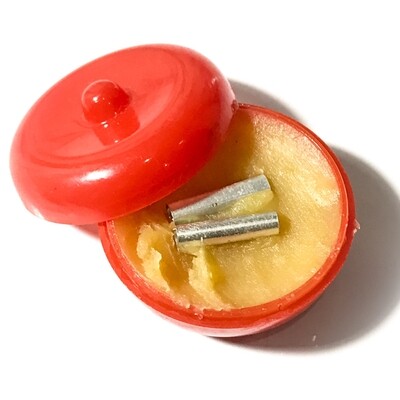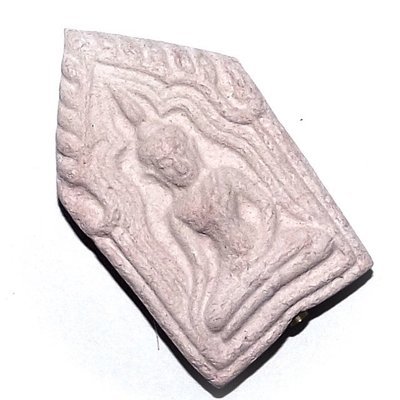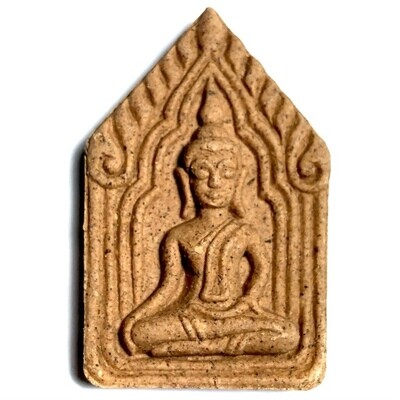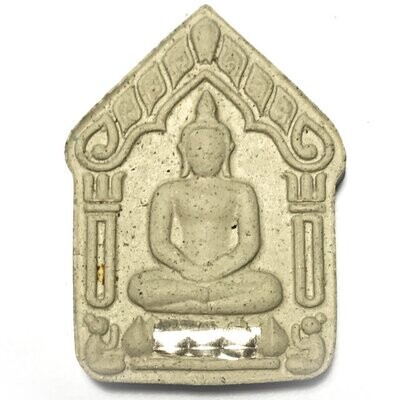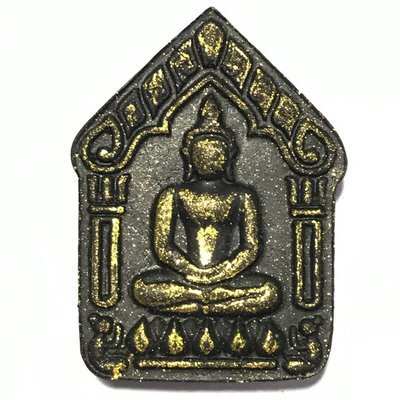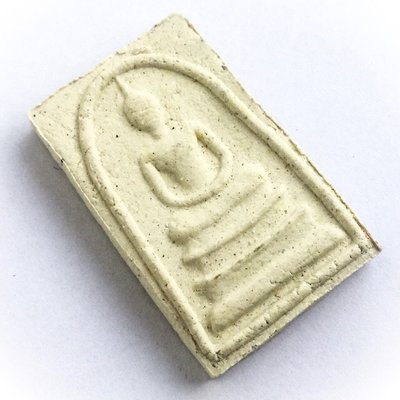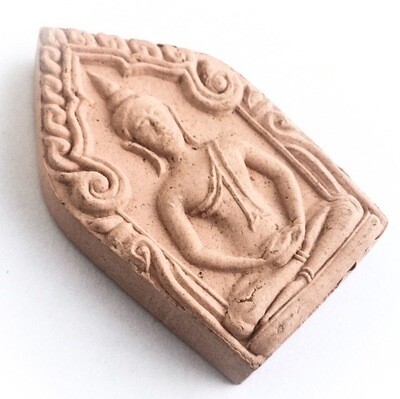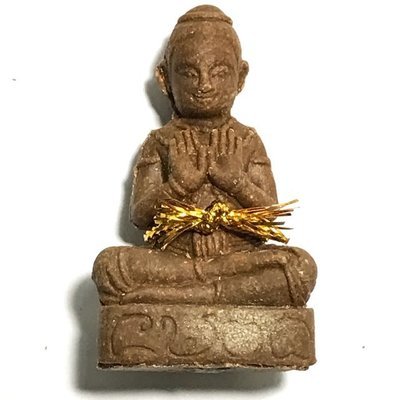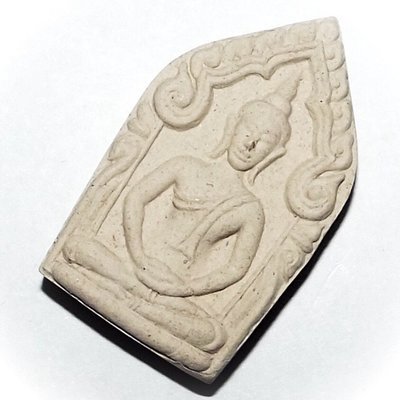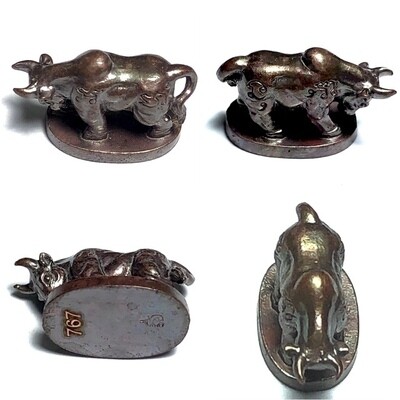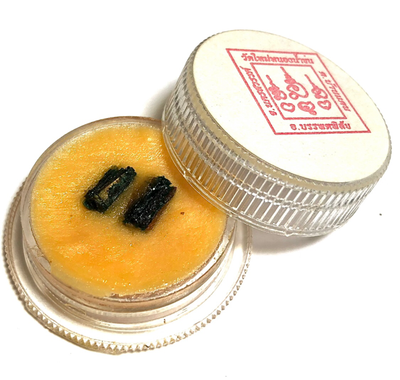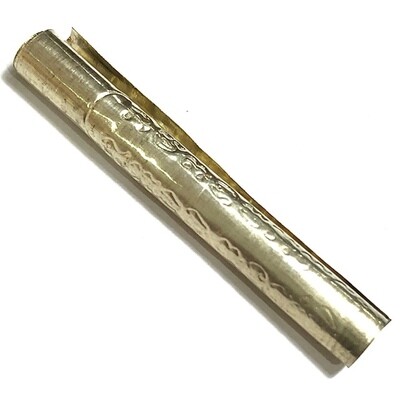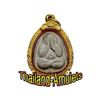

Thailand Amulets
Thai Buddhist and Magical amulets for Wealth, Health, Love and Happiness.
Vast Selection of Amulets
We have a vast selection of over 4000 different kinds of Sacred Amulets and Bucha Items, including Buddha Image, Loi Ongk statuettes, Buddhist Monk Coin Amulets, Takrut Charms, Nam Man Prai Oils, Mai Kroo Wands, Mitmor Ritual Knife, Lek Lai Kaya Siddhi Elemental Substance, Kumarn Tong, Gambling Amulets, Mae Nang Prai, Muan Sarn Sacred Powder Amulets, Palad Khik, Animist Charms, Necromantic Amulets, Buddhist, Animist, Brahman and Necromantic Amulets.
Rian Jao Sua Burapa Hlang Yant Maha Ud 2552 BE Nuea Tong Daeng Luang Por Sakorn Wat Nong Grub
The Jao Sūa Būrapā amulet, created by Luang Por Sakorn of Wat Nong Grub, is a significant item in the realm of Thai amulets. Released during the year 2552 B.E. in the Buddhist calendar, which corresponds to 2009, this amulet is renowned for its spiritual power and historical importance. Only 5000 amulets were made in Nuea Tong Daeng Sacred Copper, with a 9 days 9 nights continuous solo empowerment from Luang Por Sakorn.
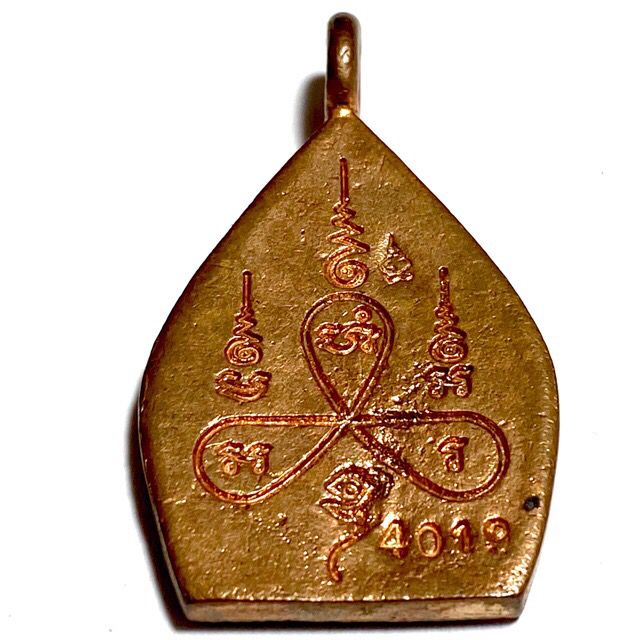
The 2552 Rian Lôr Jâo Sûa Burapa
Purpose: To bestow auspicious sīrimongkon (สิริมงคล) on disciples nationwide, channeling prosperity and wealth.
Composition: Pure nuea tōng‑daeng (copper alloy), limited to 5,000 stamped pieces (e.g. serials 1780, 3505, 3854, 6814).
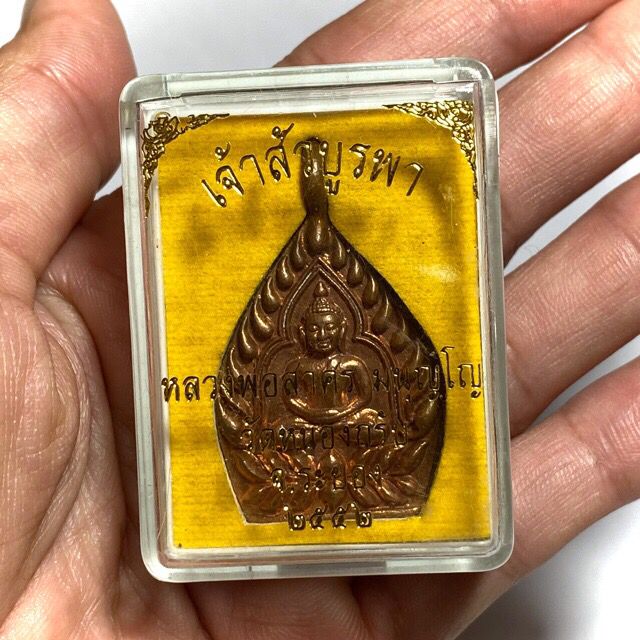
Key Qualities:
Chôke‑láp & wealth: True to its “Tycoon” title, reputed to boost commerce and financial growth.
Protection & invulnerability: Shield bearer from accidents, misfortune, and harm.
Mettā & charisma: Enhances likability and business negotiation.
Consecration Ritual (Buddhāpiśek & Devatāpiśek) Solo Blessing: Luang Por Sākorn undertook a 9‑day solitary consecration, infusing pure mental concentration and buddhakāmon power into each medallion—uncommon among multiparty ceremonies, underscoring his conviction in the amulet’s potency.
Co‑Consecrators: Unlike other “Jâo Sûa” series by different temples, this batch bears only Luang Por Sākorn’s solo empowerment.
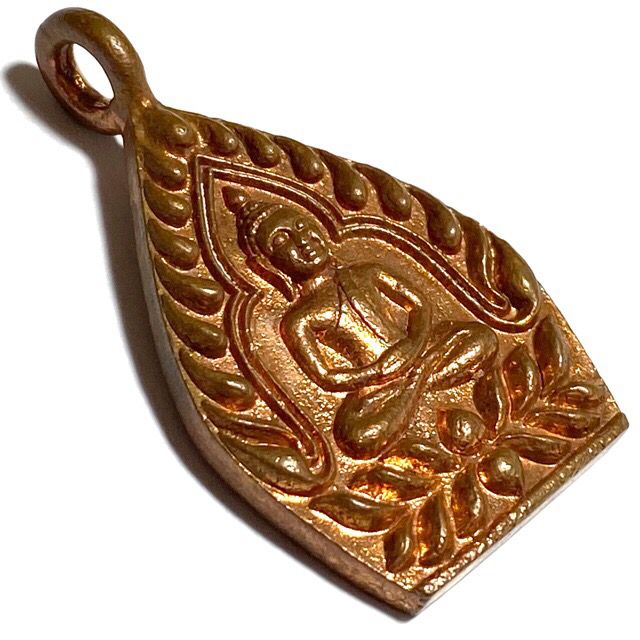
Contemporary 2552 Amulets & Talismans by Luang Por Sākorn Pokasap Coin (เหรียญโภคทรัพย์): 2552, in silver & copper; fortune & affluence.
Huāng Chûam Coin (เหรียญห่วงเชื่อม, Birthday Edition):Metals & Mintage:
Gold 72; Silver 2,552; Nawa 2,999; Alpaca 4,999; Copper 9,999; Lead 4,999; Pewter & various commemorative sets. Power: Luck, love‑attraction, protection.
Pra Chaiwat Chinābanchorn (พระชัยวัฒน์): divine prosperity & safeguarding.Hanuman Maha Prāb: copper/untreated copper; invincibility & protection. Pra Phong Prai Kuman various sacred powder amulets (พระผงพรายกุมาร): powder embedding child‑spirit essence; charisma & luck. Pra Yod Kun Phon Ban Kai: 1st edition; powder & copper; shielding & prestige.>Look Om Pong Prai Kuman: coded 999 & 4,999 beads; supreme charm & fortune. Twin Takrût Sariga: in protective sets. Yantra Cloths (e.g. Pra Siwali “9 Yants”): hand‑inscribed for wealth & devotion.Legacy & Reflections.

Luang Por Sākorn’s 2552 creations—anchored by deep lineage, rare rituals, and a 9‑day solitary blessing—represent a pinnacle of mid‑modern Thai Buddhist artistry. While the Rian Lor Jâo Sûa Burapha remains copper‑only, its limited run and potent lineage continue to galvanize collectors and devotees. True veneration transcends market value: these sacred objects serve as reminders of ethical conduct, mindful practice, and the transformative power of earnest faith. Ensure authenticity by verifying stamps, oxidation, and provenance—so that the bearer may fully align with the amulet’s intended Buddhakun (พุทธคุณ) and preserve this living heritage.
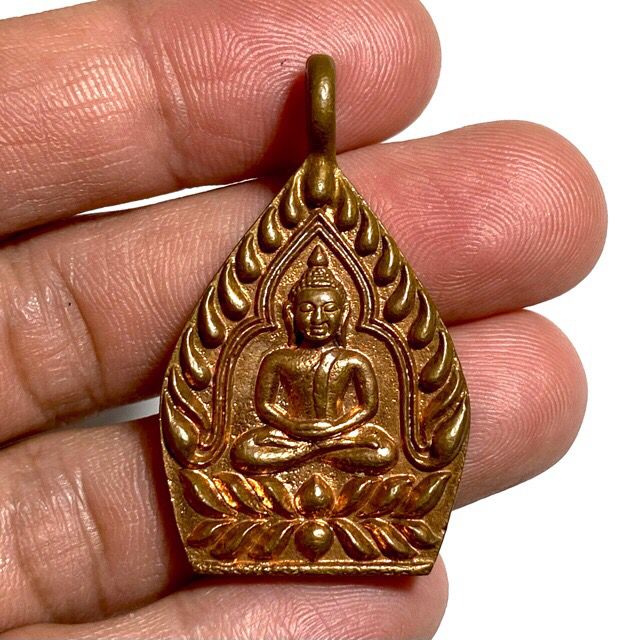
Luang Por Sakorn is widely respected for his mastery of Buddhist teachings and for his role in creating amulets that serve as protective talismans. Luang Por Sakorn is celebrated as a master of Wicha Pra Pong Prai Kumarn, which is a traditional magical practice related to the creation of amulets. His expertise in this craft has had a lasting impact on the Thai amulet tradition, establishing protocols for their empowerment and use. The amulets he produced are often imbued with protective properties and are sought after by devotees for their spiritual significance.
The Jao Sūa Būrapā amulet was specifically designed to aid military personnel and police officers, bestowing them with protection and good fortune during their duties. This intention reflects the broader cultural importance of amulets in Thai society, where they are often believed to provide spiritual protection and enhance safety.
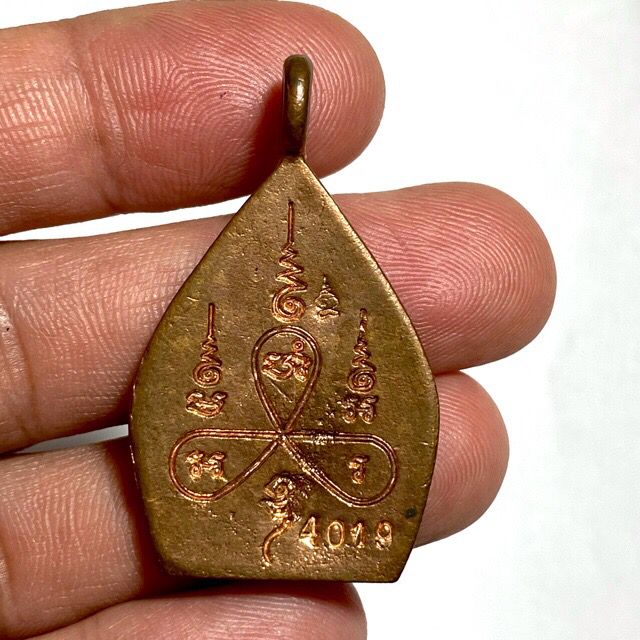
The design of the amulet incorporates traditional symbols that are thought to enhance its protective qualities. It was blessed during an extensive ceremony, giving it a high degree of authenticity and rarity.
Collectors of Thai amulets seek this specific piece for its association with Luang Por Sakorn, whose works are celebrated for their profound spiritual effectiveness .
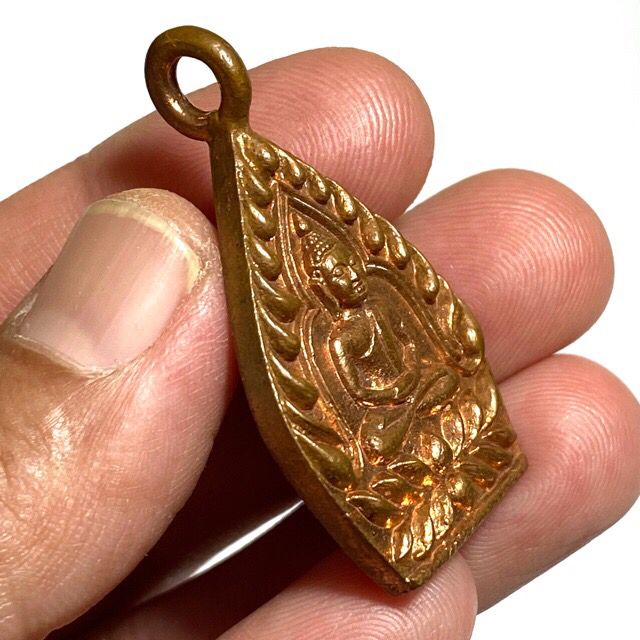
In terms of authenticity, the Jao Sūa Būrapā amulet from 2552 is categorized as a limited edition and is widely recognized among collectors. The amulet's creation included rigorous rituals, enhancing its appeal not only as a spiritual object but also as a collectible item. Original pieces are often valued significantly and may be seen as investments by enthusiasts of Thai culture and spirituality.overall, the jao sūa būrapā amulet from luang por sakorn serves dual purposes as a piece of cultural heritage and functional spiritual tool, highlighting deep intertwining belief, tradition, art in thai culture. Luang Por Sakorn is a revered figure in the realm of Thai amulets, particularly associated with Wat Nong Grub. His expertise in spiritual practices and amulet creation has made his works highly sought after for their perceived protective powers and spiritual significance.
Historical Background
In the contemporary history of Thai Buddhist masters and the sacred arts of amulet creation, few figures command as much reverence as Pra Kroo Manūññadhammavat (พระครูมนูญธรรมวัตร), known universally as Luang Por Sakorn Manunyo (หลวงพ่อสาคร มนูญโญ, 1938-2013 A.D.). As the erstwhile abbot of Wat Nong Grub (วัดหนองกรับ) in Ban Khai District, Rayong Province, his name is inextricably linked to the preservation and continuation of one of the most potent esoteric lineages of the modern era: that of his master, the legendary Luang Pu Tim Issarigō (หลวงปู่ทิม อิสริโก) of Wat Laharn Rai.
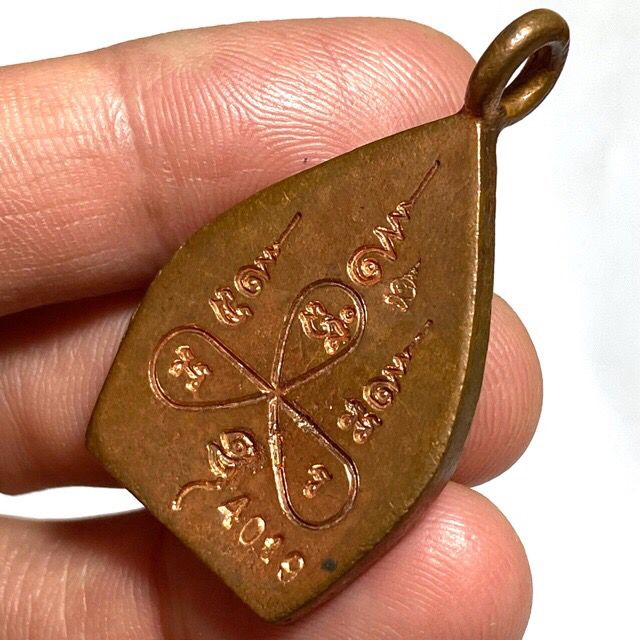
Luang Por Sakorn was not merely a disciple; he was the anointed heir, the lūksìt ēk (ศิษย์เอก) or prime apprentice, entrusted with the complete transmission of Luang Pu Tim's formidable Wichā (วิชา, esoteric knowledge). This inheritance included the arcane science behind the creation of the most famous and powerful spiritual substance in the Thai amulet world: Phong Phrāi Kumān (ผงพรายกุมาร), a necromantic powder of unparalleled efficacy. The sacred objects he consecrated are, therefore, not just artifacts of faith but are considered direct continuations of the spiritual power and compassionate intent of his revered teacher.
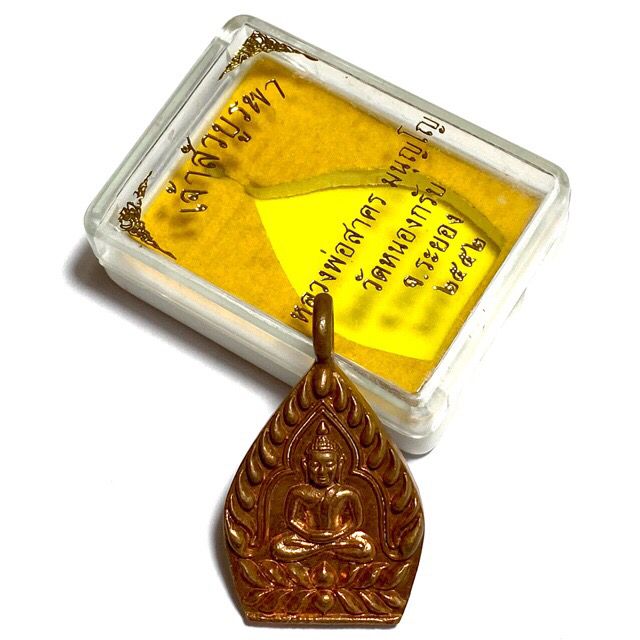
Luang Por Sakorn, ordained in 1958, is renowned not only for his creation of amulets but also for his mastery of traditional herbal medicine and mystical practices, known as Wicha Waetmont Akom. His dedication to spiritual healing and the crafting of protective amulets has attracted a devoted following, creating a legacy that continues today. His amulets are often considered a blend of Buddhist faith and local traditions, which enhances their cultural importance in Thailand.
Significance of the AmuletsThe amulets produced by Luang Por Sakorn hold profound significance within Thai Buddhism. They are believed to provide protection from misfortune and enhance luck in various aspects of life, such as health, wealth, and safety. Many of these amulets, including notable ones like the Jao Sūa Būrapā, were specifically designed to help military personnel and police officers, underscoring their role as sources of empowerment in dangerous professions.
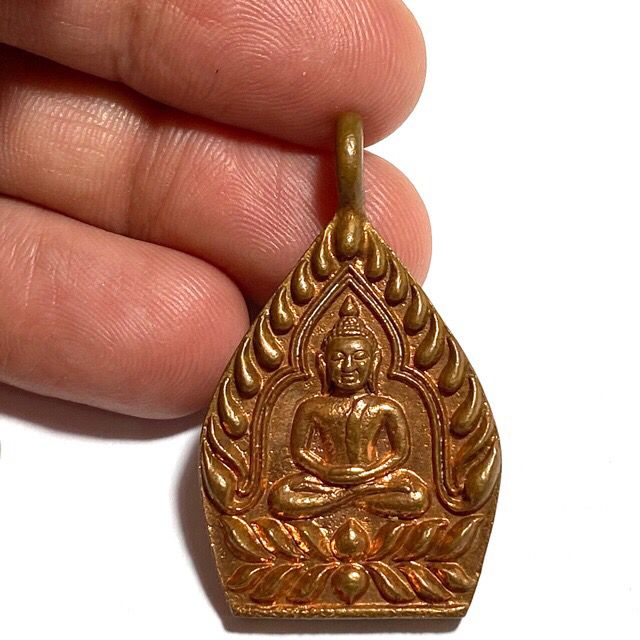
These objects serve dual purposes: as functional spiritual tools and as collectible items. The history of each amulet includes meticulous rituals conducted during their creation, which are believed to imbue them with specific powers. These rituals often include chanting and blessings, which enhance the amulet's spiritual effectiveness. As a result, items created by Luang Por Sakorn are highly prized among collectors and practitioners alike
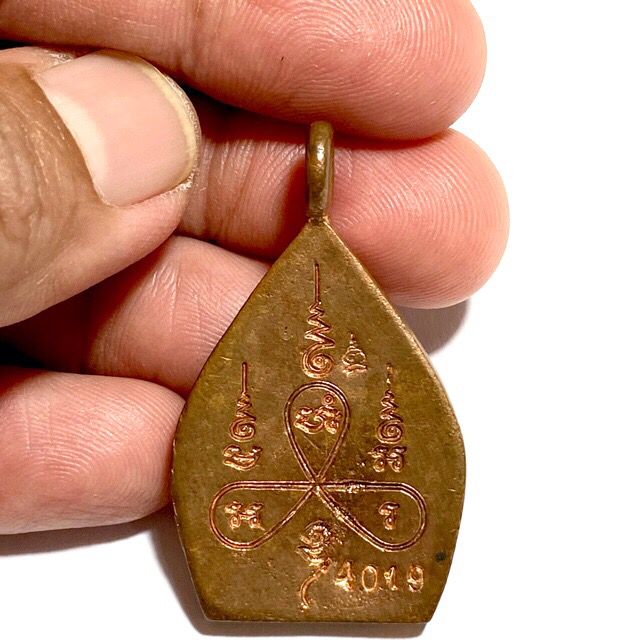
In Thai culture, amulets are not merely artifacts; they embody deep-rooted spiritual beliefs and practices. They function as daily reminders of Buddhist teachings and act as conduits for the cosmic energies that the practitioners seek to harness. Luang Por Sakorn's amulets, in particular, reflect this intertwining of faith and functionality, blending traditional Buddhist practices with local spiritual customs.
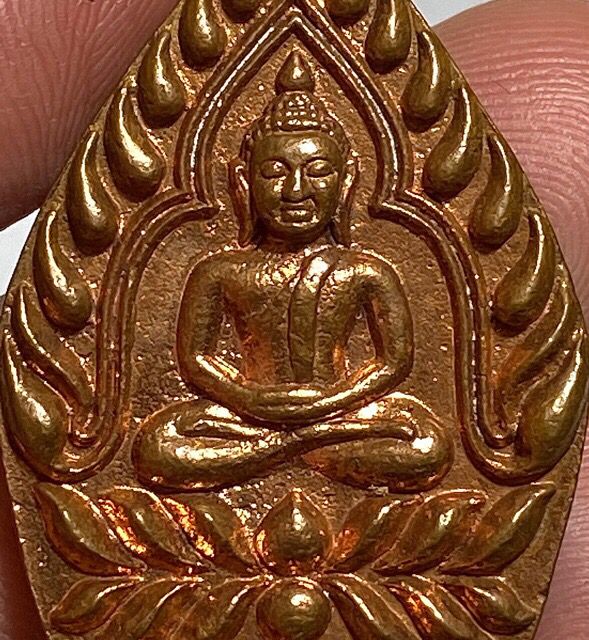
The enduring popularity of Luang Por Sakorn's amulets signals a vibrant tradition that thrives on the beliefs of protection, luck, and spiritual connectivity, showcasing the rich tapestry of Thai religious life. As such, they not only carry personal significance for their owners but also represent a living heritage that informs the broader cultural landscape of Thailand.
It is Important to know authentication practices with the amulets of LP Sakorn, as there are many forgeries, and possessing the right knowledge, enables easy authentication; Authenticating Luang Por Sakorn amulets involves several key factors that collectors and enthusiasts should consider to ensure they purchase genuine items. Here is a detailed guide on how to authenticate these revered amulets.
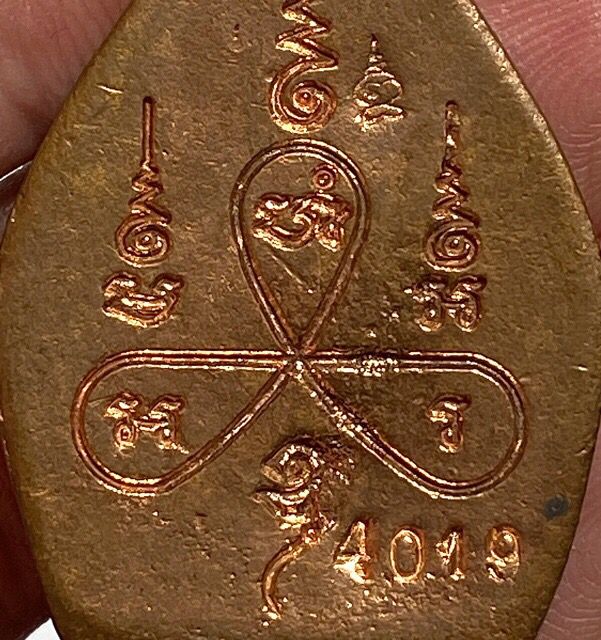
Examination of Materials and Craftsmanship
Authentic amulets of Luang Por Sakorn are usually made from specific materials such as sacred powders, oils, and occasionally metals. The most notable type of powder is the authentic prai kumarn powder, inherited from Luang Pu Tim, which is often used in the construction of these amulets. When examining these objects, potential collectors should look for consistency in the material's texture and the presence of intricate details that reflect careful craftsmanship.
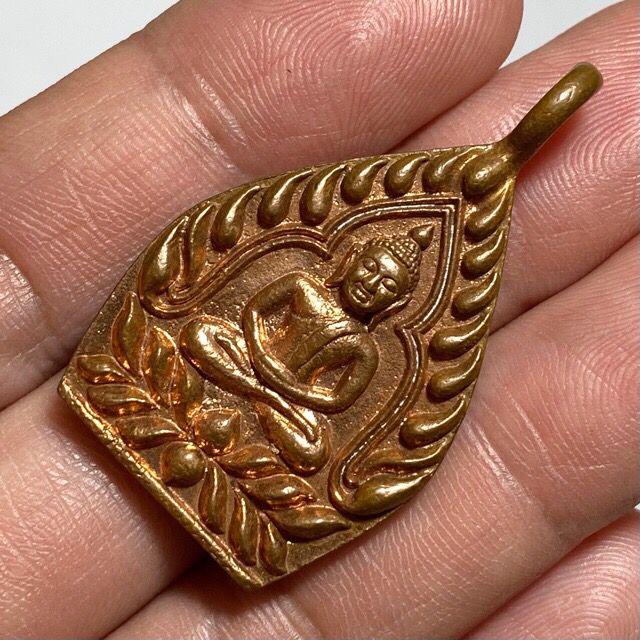
Unique Stamps and Designs
One notable aspect of Luang Por Sakorn's amulets is their unique stamps and designs. These stamps are indicative of authenticity and help differentiate genuine amulets from replicas. Collectors should familiarize themselves with these stamps and their specific characteristics. A thorough comparison with known authentic pieces can assist in verifying an amulet's legitimacy.
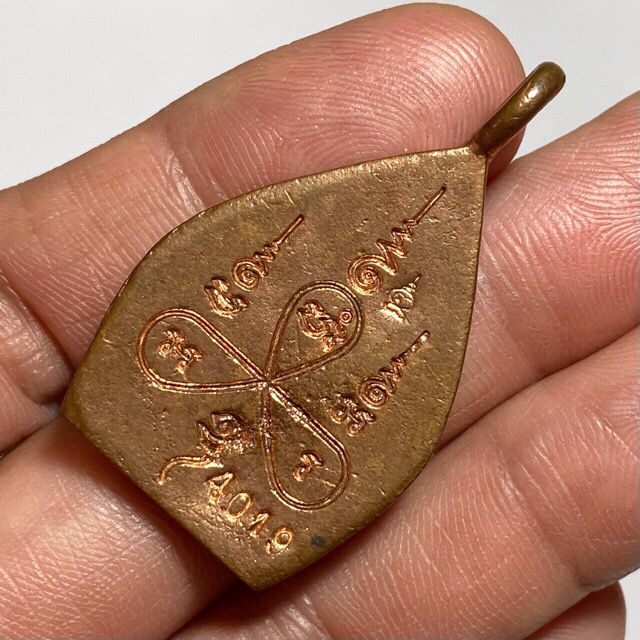
Weight and Size
The weight and size of the amulet can also serve as authenticity indicators. Genuine amulets have standard dimensions and weights based on the molds used in their creation. Sudden variations in these parameters may suggest that an item is not authentic. Weighing the amulet and measuring it against verified samples may help in this evaluation.
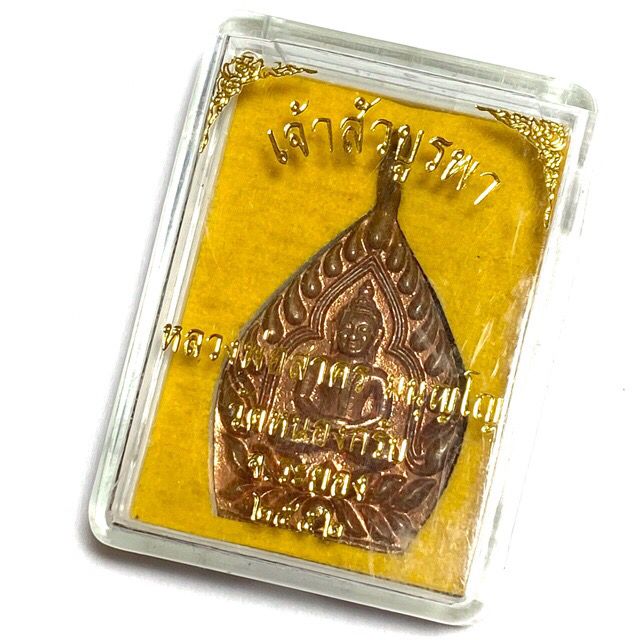
Documentation and Provenance
Amulets from Luang Por Sakorn often come with documentation or provenance that helps verify their authenticity. This may include certificates or other forms of paperwork that outline the item's origin and history. Buyers should always seek such documentation and be wary of amulets lacking proper provenance.
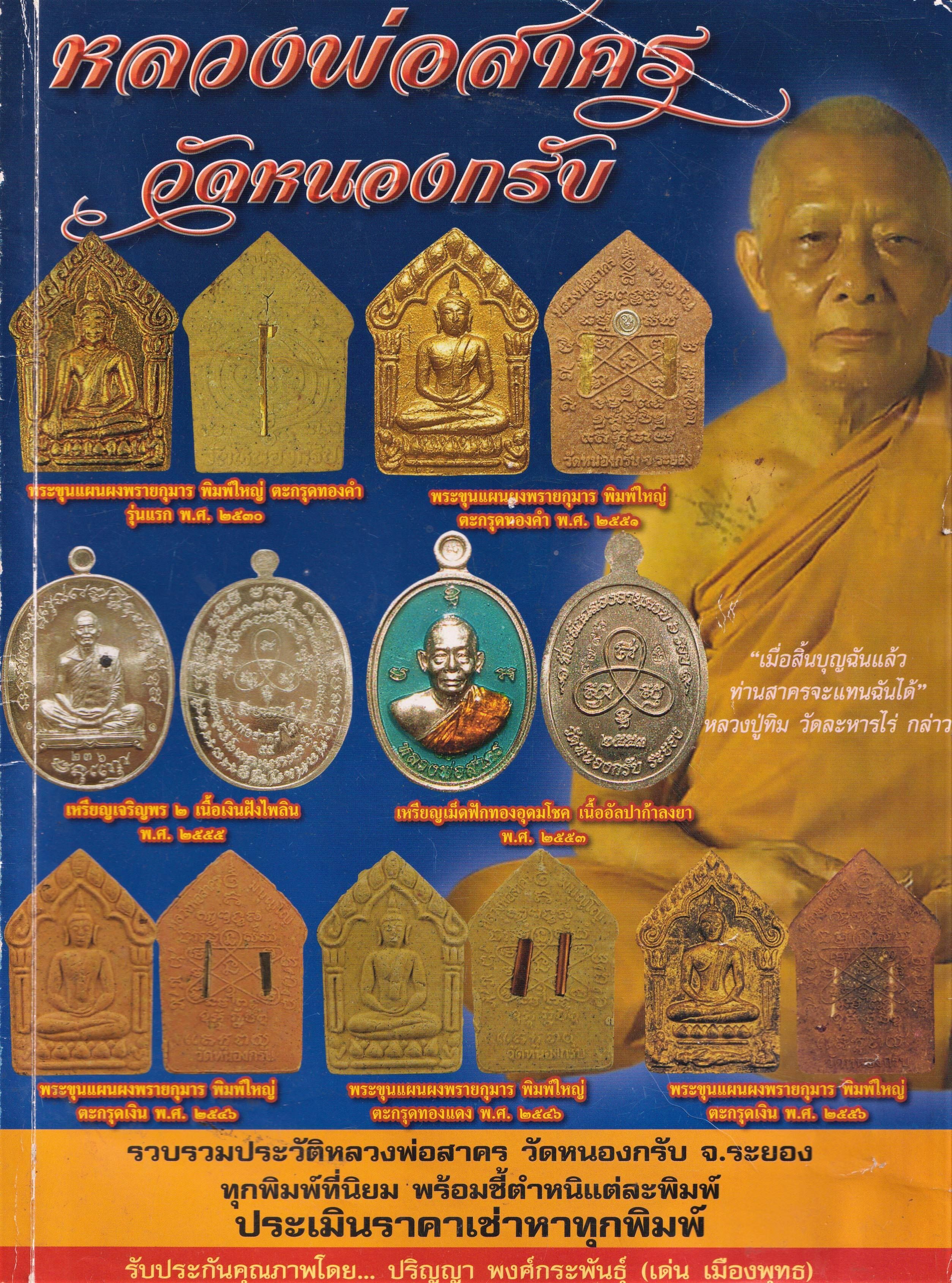
Consultation with Experts
For those uncertain about their examination skills, consulting with seasoned collectors or experts in Thai amulets can provide invaluable guidance. These experts often have extensive knowledge about the specific traits of authentic Luang Por Sakorn amulets and can assist in the authentication process.
Ritual and Spiritual Components
Lastly, authentic amulets usually carry spiritual and ritual significance, enhanced through ceremonies conducted during their creation. Understanding the significance of such rituals can provide additional insight into the authenticity of an amulet
By following these guidelines and remaining vigilant about the details associated with Luang Por Sakorn amulets, collectors and enthusiasts can significantly increase their chances of acquiring genuine items.
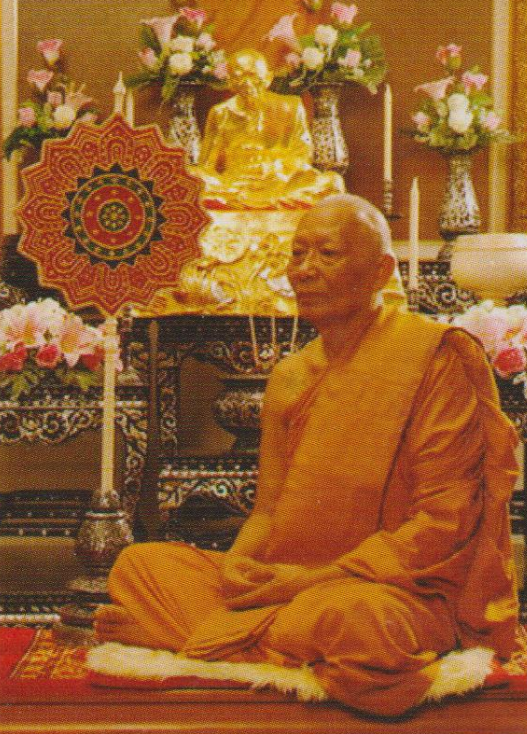
Legacy and Continuity
Today, the legacy of Luang Por Sakorn's work perseveres through the active practice and reverence of his amulets by new generations. The continuing demand for these artifacts is indicative of their sustained significance in Thai culture. Collectors and practitioners often refer to them as vital connections to the skills and teachings of one of the country's revered monks, preserving the history and spiritual practices linked to Luang Por Sakorn .
Wat Nong Grub
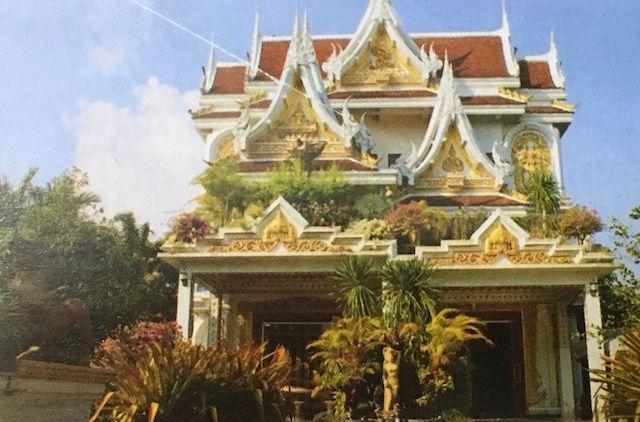
The history of Wat Nong Grub is rooted in the faith of the local community in Rayong. While detailed records of its earliest foundation are sparse, it existed as a local monastic center for generations. The name "Nong Grub" refers to the local geography, likely a marshland or pond area. Before Luang Por Sakorn's tenure, the temple was served by a succession of abbots who maintained its role as a spiritual heart of the community. One of the most significant preceding abbots was Luang Por Pheung (หลวงพ่อเพิ่ง), who was not only a respected administrator but also Luang Por Sakorn's first teacher in the sacred arts and his preceptor (Phra Upatcha) upon ordination.
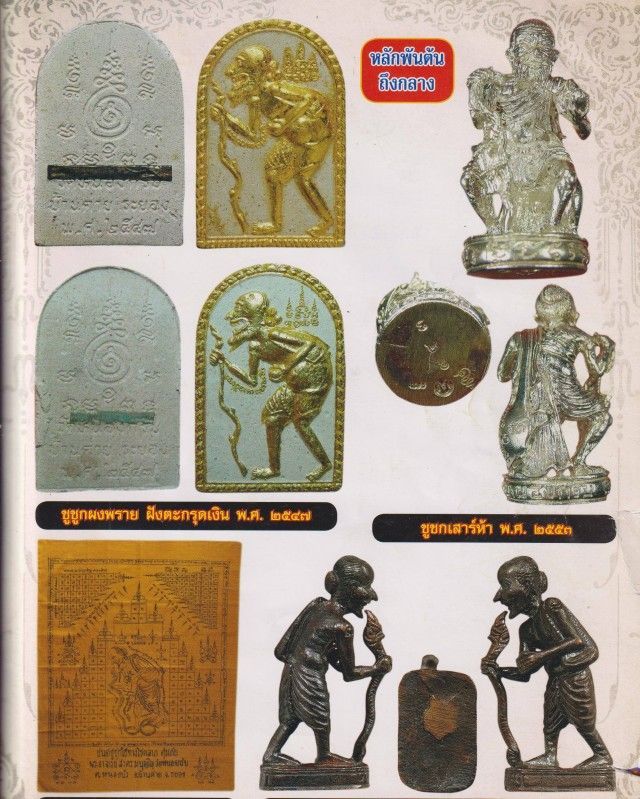
However, it was under the leadership of Luang Por Sakorn, who became abbot in 2508 B.E. (1965 A.D.), that Wat Nong Grub underwent a profound transformation. Using the funds raised from the creation of his now-famous amulets, he initiated numerous construction and renovation projects, including the main Uposatha (ordination hall), monk's dwellings (kuti), and, most notably, his visionary project: a three-story Yant Museum (พิพิธภัณฑ์ยันต์).
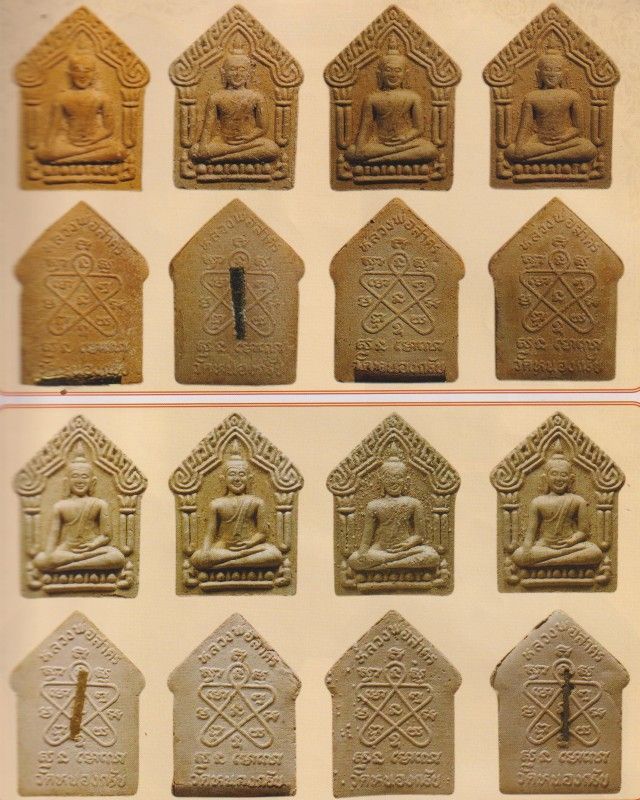
This project was intended to preserve and display the sacred geometrical designs and incantations that form the basis of Thai Buddhist esoteric practice, many of which he had inherited from Luang Pu Tim. His leadership turned Wat Nong Grub from a local temple into a major center for pilgrimage, renowned as the home of the direct successor to the Wat Laharn Rai lineage.
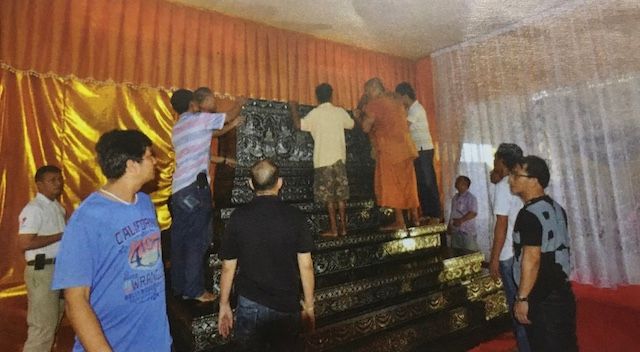
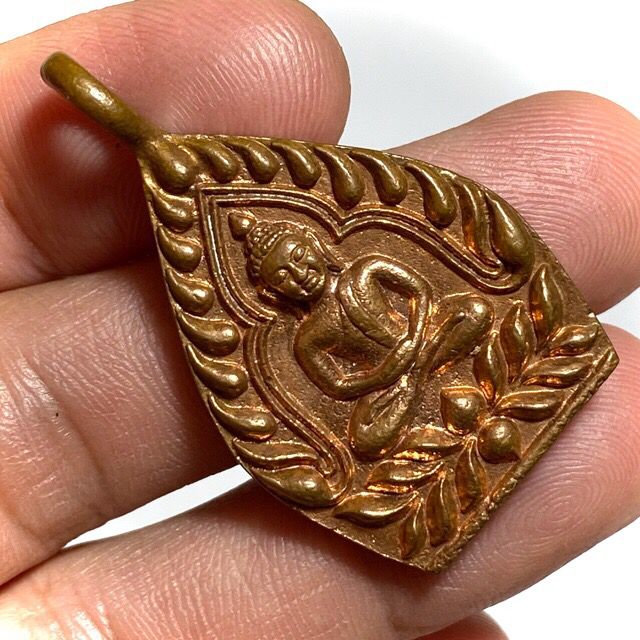
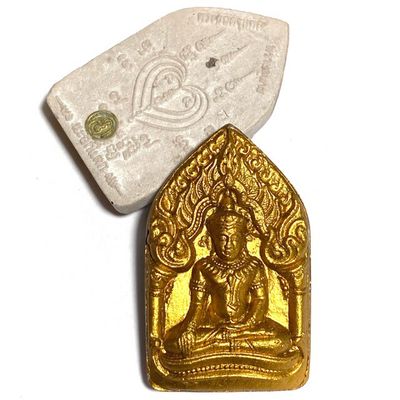
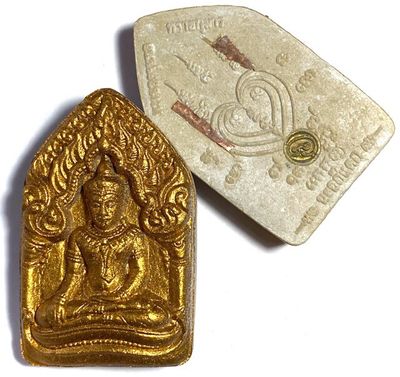
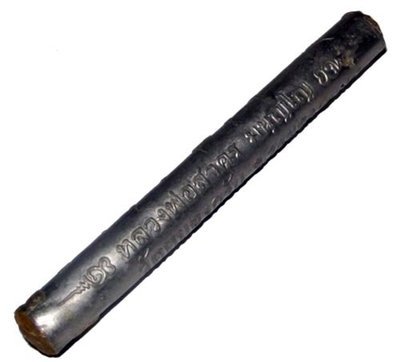
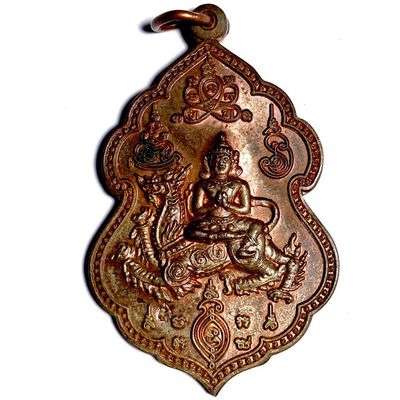
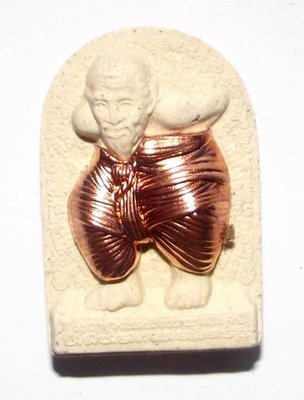
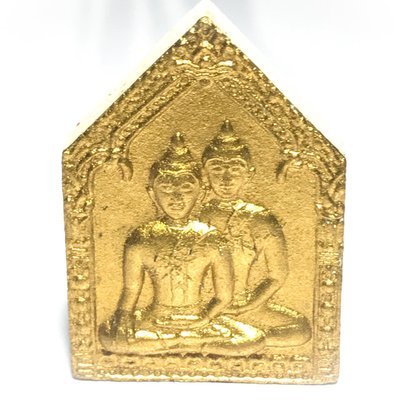
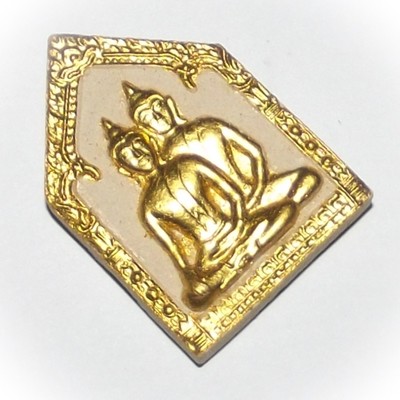
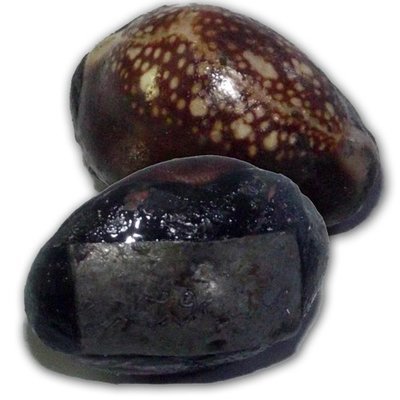
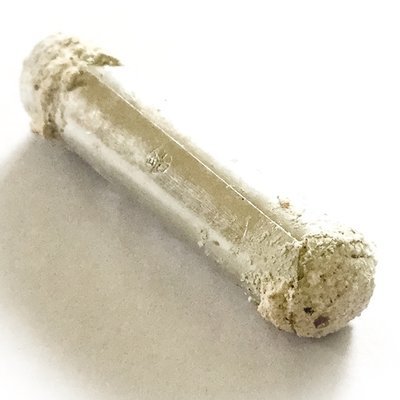
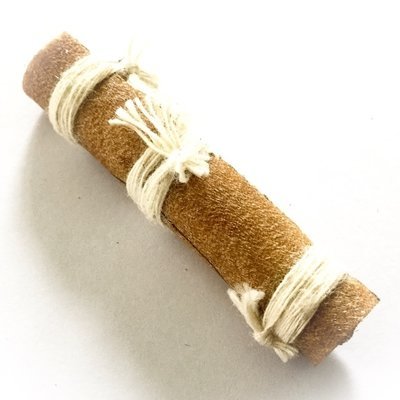
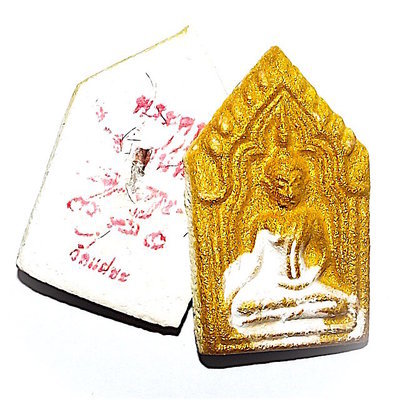
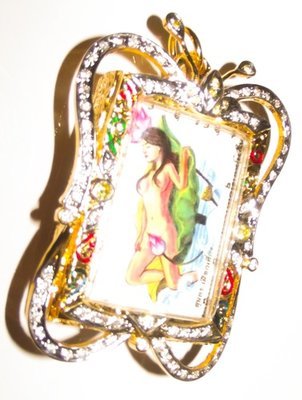
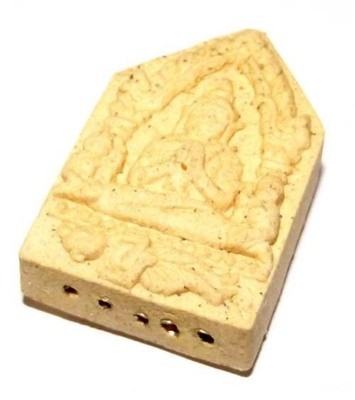
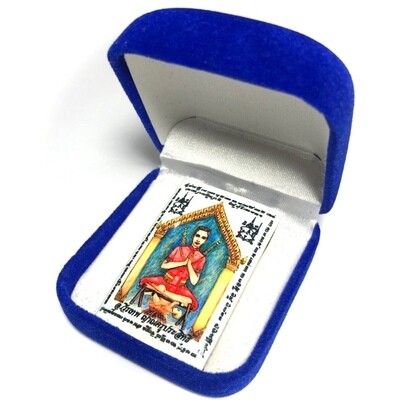
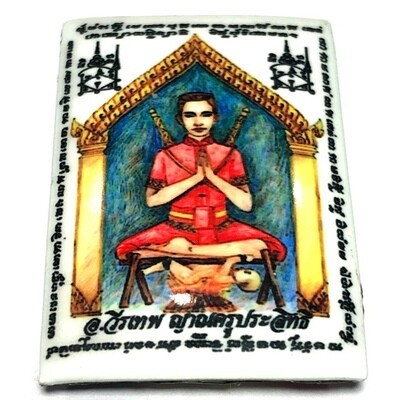
Contact Us
Follow Us on Youtube
About Us
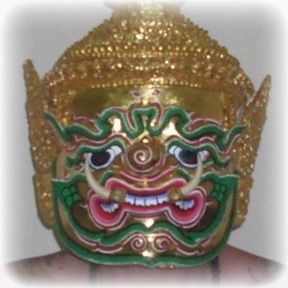
Ajarn Spencer
Proprietor
Thailand Amulets is owned and Administrated by Thai Occult and Amulet expert, Ajarn Spencer Littlewood who guarantees only authentic blessed amulets, and a free gift with every order, as well as his safe delivery or money back guarantee. https://facebook.com/ajarnspencer
